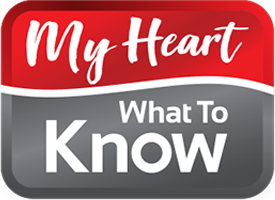Eating less salt is an important step toward keeping your blood pressure under control. These five tips will help you get started:
Use herbs and spices.
One easy way to eat less sodium is to stop adding salt to your food or slowly reduce the amount you add over time. Put away the salt shaker and try a new herb (fresh or dried are both great), spritz some lemon juice, or use a no-salt-added spice blend (you can make your own or buy premade seasoning mixes). Your taste buds will thank you!
Cook more at home.
Restaurant meals always have a lot of added salt. Look online or ask at the restaurant for nutrition information so you can choose a menu item lower in sodium. Even better – cook at home more often. Even if not every dish is made from scratch, this small change can make a big difference to your heart health.
Eat less processed foods.
Most of the sodium we eat is hidden in processed foods like deli meat, canned soup or frozen meals. Use fresh ingredients where you can. If you choose canned beans or vegetables, look for a “no salt added” product. Plain frozen vegetables have no added salt at all!
Watch out for sauces and dips.
It’s tempting to have that extra little dab of ketchup or BBQ sauce. But condiments can pack a salty punch. Remember, we’re using them to just add a bit of flavour – a little goes a long way! Pickles are another salty add-on. The sodium content can vary widely, so read the label before you buy.
Read nutrition labels.
Nutrition labels can seem really confusing, with lots of information. You can keep sodium simple by thinking about it like a traffic light:
If the food has less than 200 mg of sodium per serving, that’s a green light – a good choice with not much sodium.
Between 200-400 mg per serving is a yellow light – use caution! Don’t have too much of this food at once, and don’t choose it all the time.
Anything above 400 mg of sodium per serving is a red light. Look for a comparable product that has less added salt.
An important step towards better health for many people is reaching a healthier weight, which can reduce the risk of cardiovascular disease. To find a physician near you who specializes in weight management, click here.
—
All the information provided on this site is for educational purposes only and is not a substitute for professional medical advice, diagnosis, or treatment. My Heart – What To Know is not a healthcare provider or clinic. ALWAYS consult with a qualified healthcare provider regarding any questions you may have about a medical condition. Never disregard professional medical advice or delay in seeking it because of something you have read on this website. If you think you may have a medical emergency, call 911 or go to the nearest emergency room immediately. No physician-patient relationship is created by this website or its use.
This article was sponsored by Novo Nordisk Canada. All content is created independently by My Heart – What To Know with no influence from Novo Nordisk.

